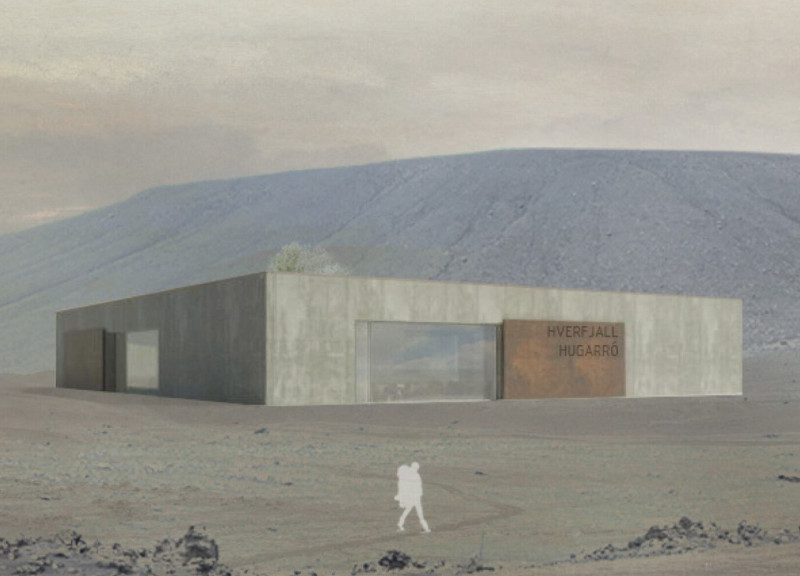5 key facts about this project
The Hverfjall Visitor Center is located in the scenic landscape of Mývatn, Iceland. It provides a space for people to gather near the prominent Hverfjall volcano. Designed to handle the region's often severe weather, the center focuses on creating a connection to the surrounding nature while offering shelter for visitors throughout the year. The core idea is to blend functionality with an experience that encourages appreciation of the area's natural beauty.
Design and Layout
At the center of the visitor facility is a sheltered courtyard that offers a place for gathering and relaxation. The building has a closed appearance on the outside but opens up to the courtyard inside. This space acts as a focal point, enhancing the connection between different areas and framing views of the beautiful landscape outside.
Geographical Considerations
Careful planning aligns the design with important geographical features such as Hverfjall, Vindbelgarfjall, and the lake of Mývatn. Large openings face these views, allowing visitors to take in the scenery while remaining protected from the weather. This arrangement encourages a natural flow between the indoor areas and the surrounding environment.
Materiality
The outer facade consists of concrete slabs mixed with local volcanic ash. This choice reflects the geological features of the site and improves the building's durability in tough weather. The appearance of the concrete changes in wet conditions, linking the structure visually with the landscape. The selected materials aim to reduce maintenance while enhancing the overall look of the center.
Interior Experience
Inside, the atmosphere is warmer and more inviting, providing a distinct contrast to the strong exterior. The layout allows for easy movement between the reception area, the exhibition spaces, and the café, creating a logical connection throughout the facility. A notable feature is a newly planted birch tree in the courtyard. This element represents a connection to Iceland’s ecological history, reminding visitors of the landscape that once was. The tree adds a sensory experience and situates the center within its natural context.






















































